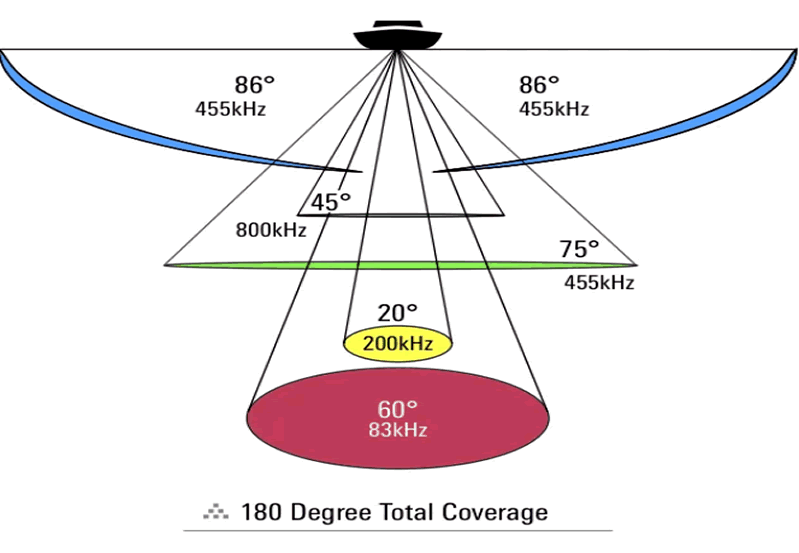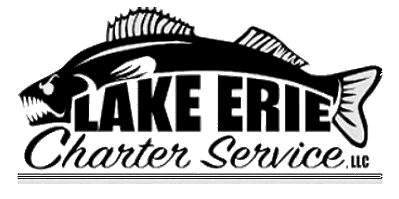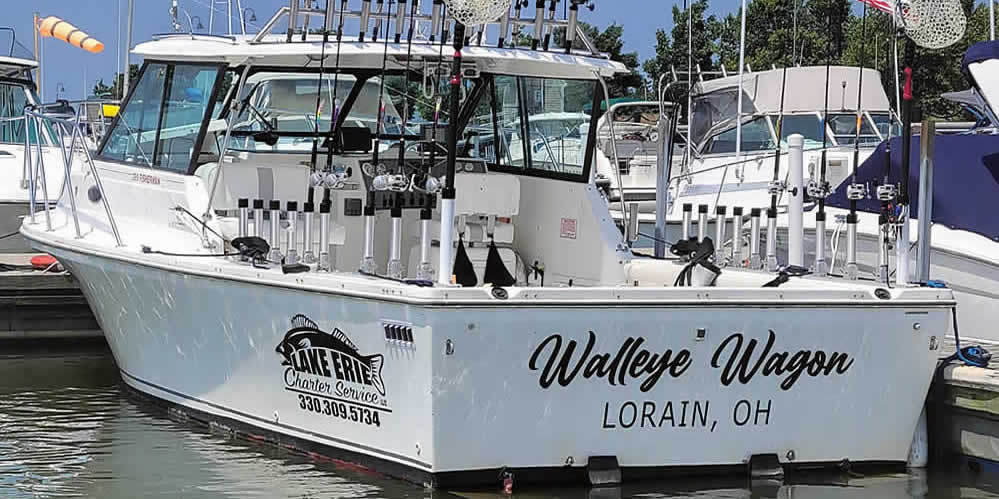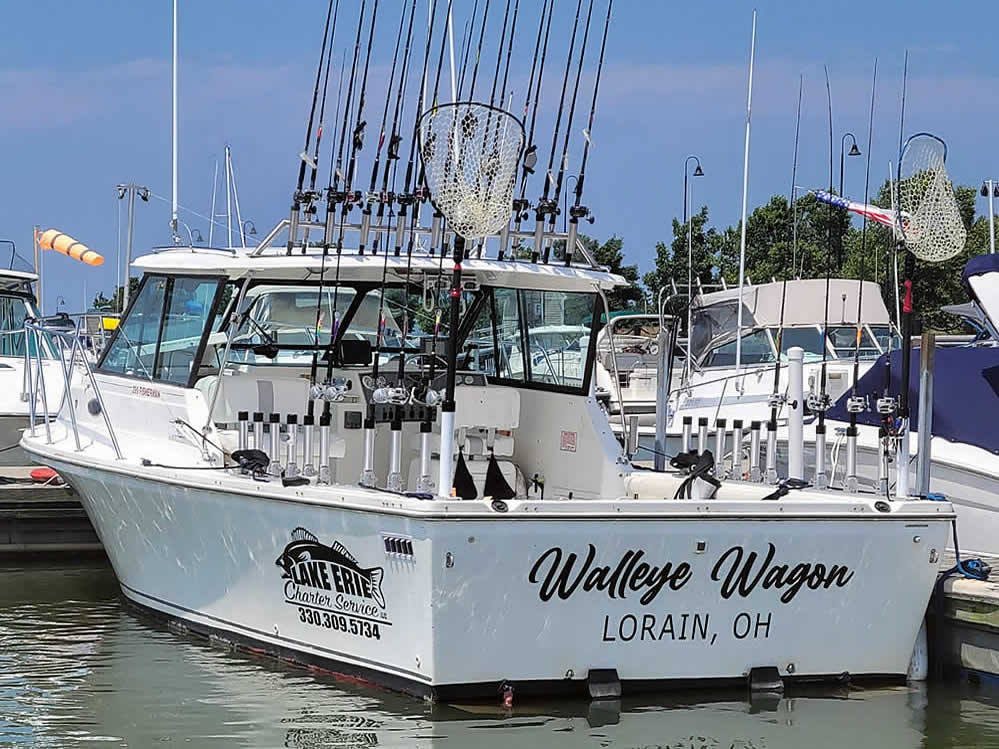Have you heard fishermen talk about “great marks” or claims of big fish on the screen? Have you caught good numbers of fish while you’re not marking fish? Your success on Lake Erie can often be directly linked to your ability to use and understand your electronics.
For a good majority of the season, Lake Erie walleyes are found suspending. In most inland lakes, fish relate to some sort of cover such as points, rock piles, river channels, etc. On Lake Erie we find that walleyes tend to school up and follow bait fish and preferred water quality (temperature, clarity, dissolved oxygen levels).
The single most important aspect of catching fish on Lake Erie? You have to be on the fish.
Fish Arches
When and why fish show up as ‘arches’ can also help you interpret a lot of what your sonar is displaying. To understand this you must understand how sonar works.
The transducer sends a sound signal down into the water and waits to hear the echo or return signal back. It measures the time it takes the signal to hit an object and then return back to the transducer. However, there is much more to it than that. We could spend days discussing all the technical details.
The good news is you don’t need an engineering degree to understand the important parts of sonar. What you do need to understand is that the transducer signal is projected down to the bottom in a ‘cone’ shape. I find a lot of anglers think of it as more of a triangle. This is not accurate it’s a 3D cone. When I’m trying to explain this to someone, I like to have them imagine the beam from a flashlight. Take the light and set it down on the floor then slowly lift it up higher and higher. Take notice of how the area of coverage gets wider as you lift the light. the angle of the beam stays the same but as the distance increases the area of coverage gets wider.
The beam or cone of the transducer works identically to the flashlight. The deeper the water, the wider the area of coverage will be at the bottom. The angle of the cone will usually be determined by the frequency settings – we’ll touch more on cone angle later. We have a three-dimensional cone under the boat but only a two-dimensional screen to display the information on.
The two dimensions the screen displays are time and distance. From top to bottom represents the distance. From right to left represents time. The right side of the screen is the present time and anything left of that point is in the past. The amount of time displayed is directly related to the scroll speed in your settings. The higher the scroll speed the less time or history is displayed, and the slower the speed the more time or history is displayed.
Let’s imagine the boat is sitting still. A fish enters the cone and swims directly through the middle of the cone and then exits the cone on the other side at a steady, but slow speed. The screen will start to show a return starting on the right side the moment the fish enters the cone. This return will continue to get longer much like its being printed out onto the screen. This will continue all the way up until the fish exits the cone on the other side.
The length of the mark on the screen from right to left does not represent the size of the fish, it only represents the amount of time the fish spent in the cone.
Once enough time has passed, that mark will have made its way all the way to the left of the screen and eventually exit the screen. Now let’s say that same fish was spooked by something and it came racing back through the cone at the exact same angle and the same depth, just in reverse – entering where it left and exiting where it had previously entered the cone but at a very high rate of speed. Again, the return would begin to print out from the right the moment the fish entered the cone it will continue to print getting longer and longer until the fish exited the cone. The same fish will have spent much less time in the cone and will be displayed as a much shorter mark on the screen.
That same fish has entered the cone at two different points within the transducer signal and swam in opposite directions each time it passed through the cone. It could have entered from the bow and exited the stern side of the cone, or it could have entered at the port side and exited the starboard side of the cone, or any angle in between.
The sonar unit doesn’t care – it’s only displaying a target in the cone for the amount of time it’s within the cone, no matter from what side it enters or exits. If a fish hangs out in the cone for long enough it will print a mark that reaches all the way from one side of the screen to the other. It will only stop when the fish exits the cone.
 The other dimension is the distance from the transducer, this is displayed vertically on the screen from top to bottom. Let’s say the fish we’ve been talking about – let’s call him ‘Joe’ – entered the cone 20-ft down in the water column and the boat is in 30-ft of water. Joe maintains the same depth as he enters the cone as when he leaves the cone. When Joe enters the very outermost edge of the cone, the distance from the transducer to Joe is slightly longer then it will be once he makes his way directly under the transducer in the center of the cone.
The other dimension is the distance from the transducer, this is displayed vertically on the screen from top to bottom. Let’s say the fish we’ve been talking about – let’s call him ‘Joe’ – entered the cone 20-ft down in the water column and the boat is in 30-ft of water. Joe maintains the same depth as he enters the cone as when he leaves the cone. When Joe enters the very outermost edge of the cone, the distance from the transducer to Joe is slightly longer then it will be once he makes his way directly under the transducer in the center of the cone.
The sonar is only able to represent distance as depth as Joe makes his way to the center of the cone the distance shortens until he makes it to the halfway point. Then the distance starts to increase again as he moves away from the center, up until the point he exits the cone. The sonar will start to print out his return slightly deeper at the start and as the distance gets shorter. The mark will start to print out onto the screen higher until he reaches the center of the cone and then back down lower as he exits – giving the mark on the screen that ideal ‘arch’ shape.
The same thing happens to the sonar return as the boat starts to move. The sonar doesn’t care if Joe is moving or if the boat is moving over Joe. The same rules apply, the sonar displays how long Joe was in the cone and what the distance from the transducer to Joe was at any given time as he passes through the cone or the cone passes over him. At higher boat speeds the marks on the screen are going to be shorter, and at slower boat speeds the marks are going to be longer. The distance will stay consistent regardless of how fast or slow we pass over Joe. As he enters and exits the cone, the geometry of the cone and his position in the cone will change the distance to the transducer as he nears the center of the cone.
There is sort of a third dimension being displayed on your screen and that is color. When Joe passed under your transducer his return strength was depicted by the brightness of the color displayed on the screen. This will also increase and decrease as the fish enters and exits the cone. However, this can be deceiving as Joe might not always pass under the transducer in the center of the cone. He could easily be off the port or starboard side making him appear to be a weaker return that some anglers would simply call a smaller fish.
Too Many Unknowns
There are too many variables to take into consideration when trying to decide how big the fish you’re marking really are. If you could keep the variables constant and have a large fish enter the cone and then a smaller fish, the sonar display will show the bigger fish as a larger mark and the smaller fish as a small mark. Here are some variables to consider.
Fish in deep water can look small, and fish in really shallow water can look huge because they are much closer to the transducer and make a stronger return. I hear guys making claims on the radio and at the dock of some big fish marks they found, but ultimately it’s too hard to say if the fish was simply swimming in the same direction at the boat, making it appear to be a longer mark.
If the signal strength was much better showing some really strong return colors on the screen, could it be that there were a few fish that just happened to be positioned just perfectly center under the cone, while the rest of the fish were more off to the sides? Could three or four fish be in the same depth together in such a tight group that the sonar couldn’t separate them, and showed one bigger stronger return as if it was one fish?
I think it’s quite possible that all of these situations are often claimed to be big fish when realistically it’s your sonar playing ‘tricks’ on you. Now, I have invested countless hours watching sonar displays and I can usually tell the difference in small baitfish schools, large shad, white bass, or white perch as opposed to walleyes. But trying to tell the difference between a 20-inch walleye and a 28-inch walleye just by the sonar returns I think could prove to be next to impossible. There is one, 100% accurate way to tell if you’re marking big fish and honestly, it’s fairly simple. That method is to catch them!
Stay tuned for Part Two!
As always, we would be more than happy to have you out fishing. Call 330-309-5734 & join us!
Captain Tom Ullum
Lake Erie Charter Service LLC
(330) 309-5734


